Posted by Elena del Valle on October 26, 2015
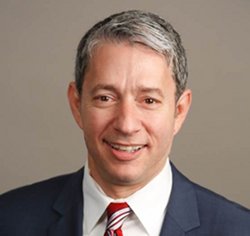
Doug Simon, CEO, D S Simon Media
Photo: Doug Simon
A podcast interview with Doug Simon, CEO, D S Simon Media, is available in the Podcast Section of Hispanic Marketing & Public Relations, HispanicMPR.com. During the podcast, he discusses his company’s Media Influencers Report with Elena del Valle, host of the HispanicMPR.com podcast.
Doug is also the founder of D S Simon Media now Simon Media. His firm pioneered Internet Media Tours and its unique approach to guiding clients, PRketing, was awarded a trademark by the US patent office. He’s provided strategic counsel and executed campaigns for Pfizer, Fidelity, Lincoln Financial, Macy’s, HOOD, the Consumer Electronics Association, Whitney Museum of American Art and the American College of Physicians.
To listen to the interview, scroll down until you see “Podcast” on the right side, then select “HMPR Doug Simon” and click on the play button below or download the MP3 file to your iPod or MP3 player to listen on the go, in your car or at home. To download it, click on the arrow of the recording you wish to copy and save it to disk. The podcast will remain listed in the October 2015 section of the podcast archive
Posted by Elena del Valle on October 21, 2015
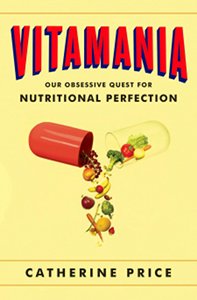
Vitamania*
A 2011 Journal of Nutrition report indicates most consumers rely on foods fortified or enriched with synthetic vitamins for their essential micro nutrient intake. That is not surprising given that most of the vitamins we consume today are synthetic, according to Catherine Price, author, Vitamania. What may surprise many is that while in the early years of synthetic vitamin development the United States played an important role, today most of the market is under the corporate thumb of two European companies. And the majority of their production facilities are in China.
Last week in my note about Vitamania (see Journalist believes devotion to supplements keeps us from good health) I indicated Catherine Price, the author, had declined to answer questions. It had been two weeks since I had sent her questions and the deadline for replies was long past. Saturday, October 17, 2015, I received an answer.
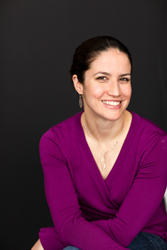
Catherine Price, author, Vitamania*
Below are the questions and answers:
HispanicMPR.com
What was the main reason you wrote the book (other than the question your husband asked you in Lithuania)?
Catherine Price:
I wanted to gain a better understanding of a subject I took for granted. I also was curious about how the story of vitamins might change the way we should think about nutrition as a whole.
HispanicMPR.com:
In one sentence how do you define a vitamin or a nutritional supplement?
Catherine Price:
(Sorry, I can’t do it in one sentence!)
There’s no chemical definition for a vitamin — the word was coined in 1911 before they had been chemically isolated, and it turns out they’re not all part of the same chemical family. The public tends to define vitamins (of which there are only 13) as a chemical that we need in very tiny amounts, and that we usually get from our diets, that is necessary to prevent a specific vitamin deficiency disease, but there exceptions to each of these statements.
A dietary supplement (that’s the official term, not nutritional supplement) is defined by the Food and Drug Administration (which is the administration responsible for regulating America’s supplements) as “a product intended for ingestion that contains a ‘dietary ingredient’ intended to add further nutritional value to (supplement) the diet.”
There’s more info on what substances that definition includes here: fda.gov/AboutFDA/Transparency/Basics/ucm195635.htm
HispanicMPR.com:
Are you opposed to vitamins?
Catherine Price:
To clarify: we have a habit of using the word “vitamin” to refer both to the 13 essential vitamins (A, C, D, E, K and the 8 B vitamins) and to the much broader category of dietary supplements (there are some 85,000 dietary supplement products on the market in America). There’s no way you could oppose the 13 vitamins — we need them in order to survive! But I don’t think that most people need to take them as pills. As for dietary supplements, I’m not necessarily for or against them, but I have a lot of concerns about their safety, efficacy, and the authenticity of their ingredients.
HispanicMPR.com:
What was the greatest challenge to the book project?
Catherine Price:
A lot of the questions I thought were simple (what is a vitamin, how do vitamins work, what do they do, how much of each do we need) do not have answers.
HispanicMPR.com:
What was the biggest surprise?
Catherine Price:
That was also probably the biggest surprise. But once I got over the terror of not having solid answers to my questions, I realized that we should use this uncertainty as a lesson: vitamins are a great example of how little we actually understand about human nutrition. Their story has taught me to stop obsessing about the minutiae of nutrition, and to just eat naturally nutrient-dense food.
*Photos: Penguin Press, Sara Remington
Posted by Elena del Valle on October 16, 2015

Vitamania
Photos: Penguin Press, Sara Remington
While it is true that there are 13 chemicals or vitamins essential for good health. And that the lack of one or more of those compounds result in the death of millions of people around the world. Catherine Price, a Philadelphia journalist, is convinced that the word vitamin has become an easy replacement in our vocabulary for healthy, and that “the very power of vitamins makes them a double-edged sword.”
She believes despite scientific uncertainty about vitamins many people use vitamins as a sort of health insurance that can ensure we live long and healthy lives. In Vitamania: Our Obsessive Quest For Nutritional Perfection (Penguin Press, $27.95), a 318-page hardcover book published this year, she explains the reasons behind her thinking.

Catherine Price, author, Vitamania
Price, who did not respond to questions via her publishing company, points out that the further removed from its natural state food is the lower its nutritional content. Eating a broad diet of nutritionally dense foods, including vegetables and fruits, and staying away from heavily processed foods and sugary beverages may be the best approach to acquiring all the vitamins we require, she says in the Epilogue. She strives to challenge readers to reevaluate their own beliefs about vitamins, nutrition and food. She suggests that while nutrition is complex eating healthy in a pleasurable and scientific way is easy.
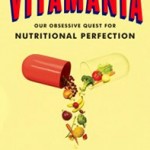
Click to buy Vitamania
Comments:
Filed Under: Books
Posted by Elena del Valle on October 9, 2015

WalletHub’s Most & Last Ethno-Racially Diverse Cities
Image: WalleHub
It is no secret that the face of America is changing. Immigration, native births and mixed ethnicity marriages may be among the factors leading to a growing racial and cultural blending across the country.
Since 2011, more than half of children born in the United States have been part of ethnic or racial minorities; and by 2020, the total minority population may grow to 40.7 percent from 30.9 percent in 2000, according to the U.S. Census Bureau.
To get a glimpse of the situation today, Richie Bernardo, personal finance writer, WalletHub, and the folks at his personal finance website researched the topic and consulted 12 academics (six men and six women). With their help he identified what could be the “most ethno-racially and linguistically diverse landscapes.” He compared 313 of the most populated cities nationwide with three criteria in mind: diversity by racial and ethnicity, language and United States region of birth and produced 2015’s Most & Least Ethno-Racially Diverse Cities, a short report.
The report concluded that four of the 10 most diverse cities are in Maryland, and two are in California. They are: Gaithersburg, Maryland; Jersey City, New Jersey; Germantown, Maryland; New York, New York; Oakland, California; Spring Valley, Nevada; San Jose, California; Silver Spring, Maryland; Renton, Washington; and Rockville, Maryland.
At the bottom of the list two of the bottom ten are in Wisconsin. They are: Birmingham, Alabama; Sioux Falls, South Dakota; O’Fallon, Missouri; Eau Claire, Wisconsin; Duluth, Minnesota; Warwick, Rhode Island; Parma, Ohio; Oshkosh, Wisconsin; and Livonia, Michigan.
Interesting findings include that although Laredo, Texas has the highest concentration of Hispanics, 95.2 percent, the racial and ethnic diversity of Oakland, California is four times higher than in Laredo. Mount Pleasant, South Carolina, has the highest concentration of whites, 90.6 percent. Detroit has the highest concentration of blacks, 79.1 percent. Miami has the highest concentration of Spanish speakers, 69.4 percent; and Honolulu has the highest concentration of Asian- and Pacific Islander-language speakers, 32.6 percent.
Posted by Elena del Valle on October 2, 2015
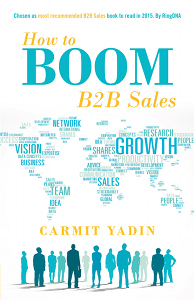
Carmit Yadin, author, How to Boom B2B Sales
Photos: Bohlsen Group
After years in the high tech industry Carmit Yadin began to work in sales. She had to learn how to be a salesperson on her own. In How to Boom B2B Sales (Archway Publishing, $11.99) she shares the insights she gained.
“With dedication, tons of mistakes, studying, asking questions, consulting people I knew and people I didn’t, I found my way,” Yadin said in a press release. “I don’t want anyone with a passion for sales to toil as I had to. Business is between people, not companies. We must provide solutions for these people and stop trying to sell if we want to ultimately boom sales.”
The 121-page book published in 2014 is divided into 22 chapters. In it she stresses that readers should focus on the customer’s financial results rather than their own, break the sales process into small pieces, pursue sales through social media, and develop B2B sales leads and qualify them before following up.
Yadin, a Tedx speaker, focuses her time on helping business leaders increase sales. She lives in Tel Aviv, Israel.
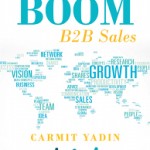
Click to buy How to Boom B2B Sales
Comments:
Filed Under: Books

















